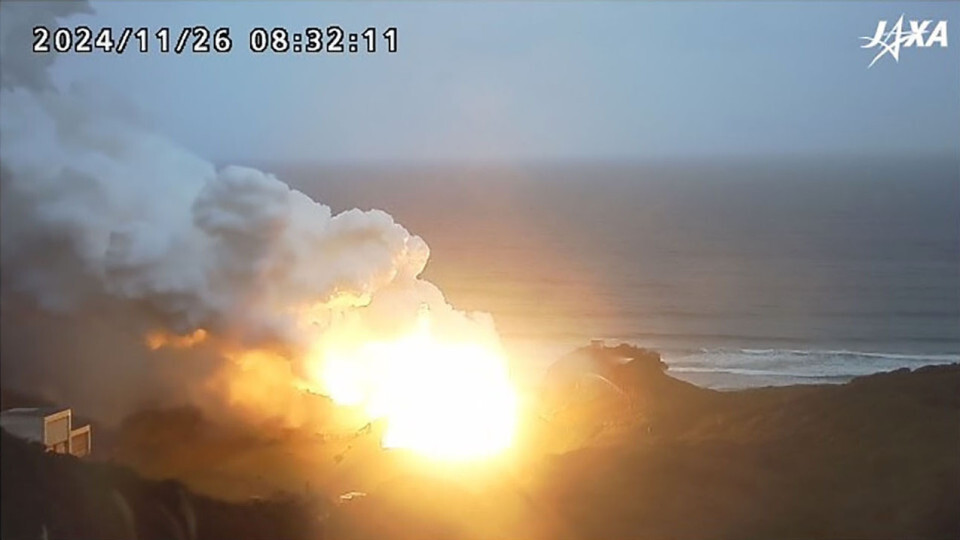26.11.2024

Screenshot from footage of live camera of the Japan Aerospace Exploration Agency shows fire at JAXA's Epsilon small rocket engine test facility at Tanegashima Space Center in Kagoshima Prefecture on Nov. 26, 2024. (Kyodo)
An engine being developed for use in the Epsilon S small rocket exploded Tuesday during a combustion test at a facility in southwestern Japan, the Japan Aerospace Exploration Agency said, the second such incident in 16 months.
The explosion occurred 49 seconds after ignition at 8:30 a.m. at the Tanegashima Space Center in Kagoshima Prefecture. There were no injuries or damage to buildings outside the center.
The combustion pressure was higher than expected, JAXA said, adding it will continue to investigate the cause. The ground test for the second-stage engine was scheduled to last about 2 minutes.
"We are extremely sorry that we were unable to meet expectations," JAXA project manager Takayuki Imoto said at a press conference. "We can learn from failure. We will take advantage of this opportunity to develop a more reliable rocket."
The engine was 3.2 meters long with a diameter of 2.5 meters. It carried about 18 tons of solid fuel, about 3 tons more than the second-stage engine of the conventional Epsilon rocket, according to JAXA.
The space agency plans to launch an Epsilon rocket using almost the same type of engine with a Vietnamese satellite on board by the end of March, but changes to the plan seem inevitable due to the need for an investigation.
The explosion followed a similar incident in July last year when the same type of engine exploded during a test at the Noshiro Testing Center in the northeastern prefecture of Akita, severely damaging both the engine and facilities at the test site.
JAXA is developing the Epsilon S as the successor to the current Epsilon series to enhance the country's competitiveness in the growing satellite launch market, but the continuous failures could potentially slow progress.
Quelle: Kyodo News
